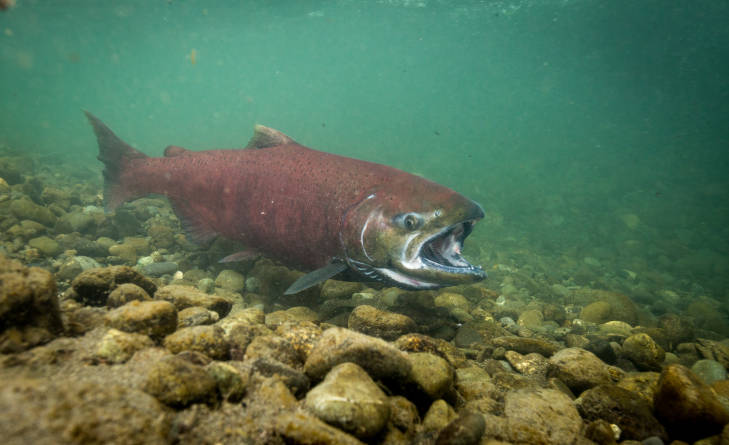In response to a petition by the Center for Biological Diversity and Pacific Rivers, the National Marine Fisheries Service has made an initial finding that Endangered Species Act protections may be warranted for Washington coast Chinook salmon. The agency will initiate a status review for Washington coast spring-run and fall-run salmon populations.
See the petition here.
See NOAA’s “90-Day Finding on a Petition to List Chinook Salmon on the Washington Coast as Threatened or Endangered under the Endangered Species Act” here.
“This is a welcome step toward ensuring that we can keep viable salmon runs for future generations,” said Jeff Miller, a senior conservation advocate at the Center for Biological Diversity. “Early returning spring-run salmon are in trouble all along the West Coast, and Endangered Species Act protection could help stop their slide toward extinction.”
The agency will evaluate the status and threats for salmon spawning north of the Columbia River and west of the Elwha River, including in the Chehalis, Quinault, Queets, Hoh and Quillayute river basins on the west coast of the Olympic Peninsula.
Spring-run Chinook, who are distinct from fall-run salmon, return in the spring from the ocean to freshwater rivers, staying for many months in deep pools until fall to spawn.
Washington coast spring Chinook have declined significantly and are now at a fraction of their historical abundance, with an average of only 3,200 adult spawning fish returning annually to Washington coast rivers.
Spring Chinook are depleted because of habitat degradation due to dams logging and roads, water diversions and migration barriers that block suitable spawning habitat and prevent upstream and downstream migration.
They’re also threatened by a proposed new dam in the upper Chehalis River, harvest in ocean commercial fisheries and climate change, says the Center.

